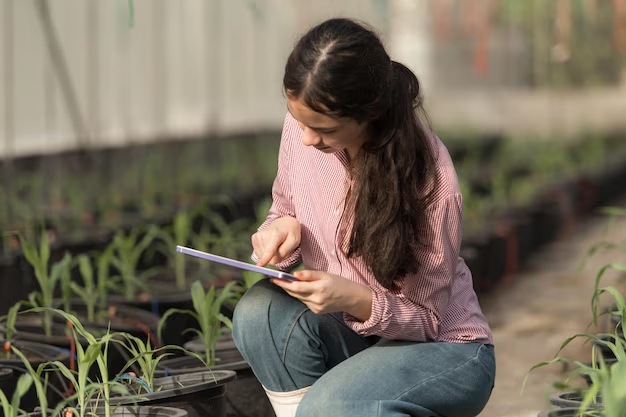Get a Head Start on the Rural Microentrepreneur Assistance Program
For many aspiring business owners in rural America, securing financial support is the first hurdle in turning their dreams into reality. The Rural Microentrepreneur Assistance Program (RMAP) offers a lifeline, providing essential funding to help microbusinesses grow and thrive in these regions. Let's delve into what RMAP is all about, how to get started with it, and what other resources are available to ensure your entrepreneurial journey is a successful one.
Understanding RMAP: A Key to Your Success
RMAP is designed to support the development and success of small enterprises in rural communities. By offering loans and grants, the program helps microentrepreneurs and rural organizations foster economic growth and create jobs.
Who Can Benefit?
- Microbusiness Owners: Enterprises with 10 or fewer full-time employees.
- Rural Organizations: Nonprofits and public institutions committed to economic development.
What Does It Offer?
- Loans to rural microbusinesses for startup and expansion activities.
- Grants to organizations, which, in turn, provide training, technical assistance, and microloans to microbusinesses.
Steps to Get Started with RMAP
Embarking on your journey with RMAP involves understanding eligibility criteria, preparing a business plan, and initiating the application process. Here’s how to begin:
1. Evaluate Eligibility
Ensure your business is in a qualifying rural area and meets the other necessary criteria defined by RMAP. This typically includes having 10 or fewer employees and being engaged in an eligible industry.
2. Develop a Robust Business Plan
Craft a detailed business plan outlining your objectives, strategies, and financial projections. This document will be crucial not only for your RMAP application but also as a roadmap for your business growth.
3. Connect with Rural Development Contacts
Engage with local USDA Rural Development contacts who can provide guidance and support throughout the application process.
4. Prepare Your Application
Compile your documents, including your business plan, proof of eligibility, and other necessary forms. Incomplete applications can delay funding, so ensure everything is comprehensive and accurate.
5. Await Approval and Next Steps
Once submitted, your application will be reviewed, and successful applicants will be notified to proceed with the funds disbursement process.
Expanding Your Horizons: Complementary Financial Tools
While RMAP is a fantastic start, there are additional resources that can further bolster your entrepreneurial ambitions:
Government Aid Programs
- Small Business Administration (SBA) Loans: Tailored for small businesses, offering multiple loan programs.
- Economic Development Assistance Programs: Grants and investments for fostering economic infrastructure and development.
Financial Assistance Options
- Crowdfunding Platforms: Raise funds from a large number of small investors, effective for increasing capital.
- Microloans: Many organizations offer microloans that can complement RMAP funds.
Debt Relief and Credit Solutions
- Refinancing: Lower your interest rates by consolidating multiple debts into one manageable loan.
- Credit Counseling Services: Experts can guide you on improving credit scores and managing debts efficiently.
Educational Opportunities
- Business Incubators and Accelerators: Provide mentorship, office space, and resources to nurture your business.
- Online Courses and Certifications: Platforms like Coursera and LinkedIn Learning offer courses to sharpen your business skills.
Quick Financial Resource Guide
Here is a handy list to consider as you map out your financial journey:
- 🌟 SBA Loans: Harness government-backed loans for small businesses.
- 💼 Economic Development Grants: Access funds dedicated to rural development.
- 💳 Credit Counseling: Free or low-cost services to help manage debts.
- 📚 Business Incubators: Get mentorship and practical support.
- 🎓 Online Courses: Enhance knowledge in business management and entrepreneurship.
Kickstarting your business in a rural landscape does not have to be daunting. With programs like RMAP and other financial resources, you’re on your way to building a successful enterprise that contributes to the vitality of your community. The right support can make all the difference, so leverage these opportunities to fuel your entrepreneurial spirit.

- A Comprehensive Guide To The Senior Companion Program
- Comprehensive Guide To The Biotechnology Risk Assessment Research Grants Program
- Agriculture Innovation Center Demonstration Program: Your Comprehensive Guide
- The Agriculture And Food Research Initiative - Food Safety Challenge Area: A Guide For Consumers
- Agriculture And Food Research Initiative - Childhood Obesity Prevention: A Comprehensive Guide
- Understanding Federal Transit Grants For Rural Areas
- Understanding The Homeless Veterans' Reintegration Program
- Unleashing Opportunities With The YouthBuild Program
- Understanding Native American Housing Block Grants
- Unleashing The Residential Rehabilitation Assistance Program: The Definitive Guide